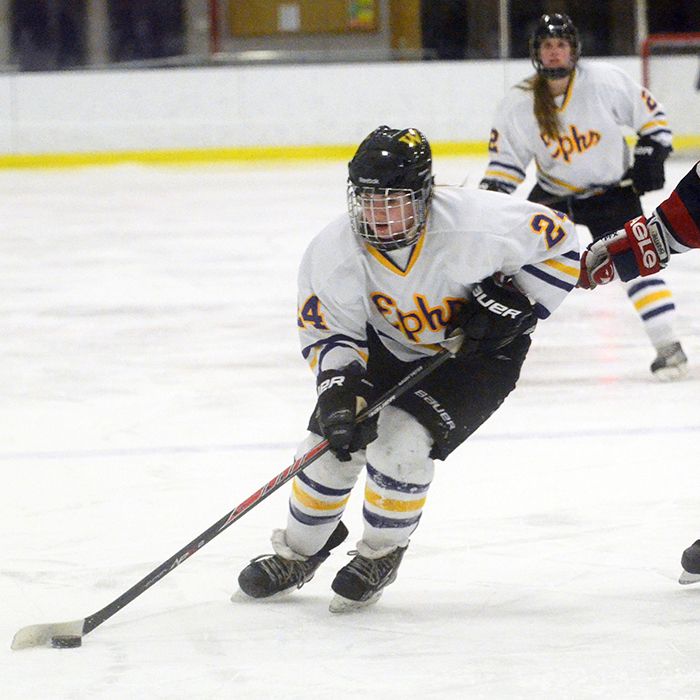
With the Sochi Olympics behind us, the hype of many sports not typically covered by mainstream media will begin to fade away.
Once on the Olympic chopping block, women’s hockey received much support in Sochi, but with the Games over, the real challenge begins for a sport looking for more opportunities, and more exposure for hockey’s top female players.
Riverview Bingo Palace 02 from Chatham Voice on Vimeo.
Immediately following the Olympics, goaltenders Noora Raty and Shannon Szabados signed professional contracts with a men’s second tier team in Sweden, and Southern Professional Hockey League respectively. Although the moves are both positive steps for the sport, unless you’re a goaltender, the options are limited for many players following their minor hockey eligibility, and local athletes would like to see their game reach a new level with opportunities available.
“I would obviously like to see the women’s game reach the level of the men’s, but I recognize that there are a lot of other smaller steps that would need to take place before that were to happen,” said Chatham’s Hokey Langan, who has represented Canada internationally and was the captain of the Ohio State Buckeyes NCAA Division I women’s hockey team. “I do still believe there is room for the game to grow. I think increased media coverage would be a great place to start, as this would increase the exposure for female hockey players and allow people to really see the talent and skill we possess.”
To boost that exposure, some of Chatham-Kent’s biggest women’s hockey stars would like more leagues for women across Ontario and Canada, similar to the levels of leagues men have available.
“I think creating more leagues for junior women’s hockey players looking to be recruited for college should be a focus across the country,” said Tilbury’s Chelsey Stevenson, who helped the Williams College Ephs win an NCAA NESCAC championship this season. “A much larger junior league that extended further than Ontario would be extremely beneficial to those players without the means to travel the insane distances required by the PWHL.”
Langan and Stevenson are both Provincial Women’s Hockey League (PWHL) alumni, the Province’s top league for Junior aged women, but hold a common desire with younger players, including Thamesville’s Rachael Tricker, of expanding options for girls in Ontario looking to advance to the next level.
“I’d like to see a league for girls hockey that is similar to the OHL or CHL for girls to play in,” said Tricker, who plays Midget ‘AA’ hockey for the Bluewater Hawks.
The Canadian Women’s Hockey League is currently the highest league available for women in North America, however funding restrictions keep most women unable to compete without working outside hockey, and development leagues beyond minor hockey, the PWHL, and college are still lacking.
More barriers however, still face women’s hockey.
“Quality ice time for practices,” stated Tricker, a Lambton-Kent Composite School student, when asked about barriers to building the women’s game in Canada. “I know Chatham girls get less ice time than boys and also in Strathroy where I play we have one practice a week, which I don’t think is enough to improve.”
“Ice time specifically presents one of the most difficult barriers,” echoed Stevenson. “In every instance that I have come across in my career, men take precedence over women when scheduling ice.
“Of course another hurdle for women in the hockey world are naysayers,” said Stevenson, who attended PEAC Academy to get the added ice time she needed to improve. “There will always be a person somewhere who believes that a competitive, physical sport such as this one should be left to men, and every time we set foot on the ice, we strive to prove that person wrong.”
For an elite NCAA player such as Langan, who on the men’s side of the sport would have instantly signed a professional contract, the problem in women’s hockey gets even more difficult when the PWHL and college are no longer an option.
“I think the big challenge that women players deal with that men don’t necessarily do is the transition from their last year of midget and junior to college hockey and where to play following college. If you want to play at a professional level, there are very limited options,” said Langan, who did speak of a select group of women advancing to the CWHL and European leagues.
Despite the challenges, Tricker, Stevenson, and Langan still believe the skill level, and competition in the women’s game is improving, and opening the eyes of fans across the globe.
“I think the skill has gotten a lot better and more competitive, and girls are trying to reach the boys’ level,” said Tricker. “Every year it is getting harder to make higher level teams because there are so many more skilled girls hockey players now, than there used to be.”
“From the first time I set foot on the ice until the first day I donned my Williams jersey, women’s hockey has certainly taken a massive step in the right direction,” said Stevenson of the growth women’s hockey has experienced since she started playing at the age of three.
Despite the positive strides, many questions still linger about where women’s hockey can go next. With the Olympics done, and the frenzy over, these local athletes hope the women’s game continues to grow, and that the support doesn’t fade.
“So many Canadians identify with hockey and feel it is rooted in our culture, but there is a disconnect between the opportunities for men and those for women,” said Langan. “I really hope that the talent displayed by our women’s team at the Olympics and the support behind these athletes doesn’t end just because the Olympics are now over.”
“I have seen this game grow from just a small seed into a nationwide epidemic,” added Stevenson. “But its growth is far from complete.”






